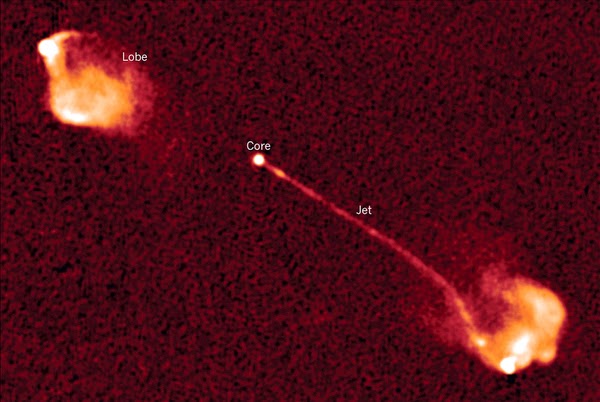Dr. Frédéric MARIN
Astronomical Observatory of Strasbourg
University of Strasbourg, CNRS, UMR 7550
11 rue de l'université
67000 Strasbourg
FRANCE
Research summary
Shining so brightly that they often eclipse the galaxies that host them, active galactic nuclei (AGN) are extragalactic objects powered by black holes a billion times as massive as our Sun. Because of their extreme luminosities and cosmological distances, AGNs are prime laboratories for every aspect of physics, from relativity to magnetohydrodynamics, and offer a unique opportunity to study the condition of the Universe at various redshifts. Yet, due to their remoteness and small intrinsic sizes, they remain poorly understood as our current telescopes are not powerful enough to resolve them spatially. To work around this problem, my research project uses polarimetry, a technique that is extremely sensitive to the source geometry and magnetic fields, to unveil the unresolvable. As of today, only a small fraction of the polarization of non-jetted AGNs has been observed, leading to blurry details on how and when AGN form, accrete, and impact the host galaxy they reside in. By leading AGN polarimetric observations across the whole electromagnetic spectrum, I am constraining for the first time the AGN geometries and intensity of the magnetic fields at sub-parsec scales. To fit data and constrain the dust mineralogy, feedback mechanisms, relativistic processes and production of high-energy radiation, I helped to develop (and I am now in charge of) STOKES, the very first open-access software able to simulate the polarized radiative transfer of photons from the infrared to the gamma-ray band. By doing so, we will soon have a quantitative and panchromatic model of how AGN central engines work and shape our Universe.

3C 175, an active galactic nucleus with powerful radio jets (NRAO/AUI).
The STOKES code
I have been largely involved in the development of STOKES, a radiative transfer Monte Carlo code that is unique in the field of AGNs, since the early stages of my career and rapidly took the leadership of the software. The code is in open access (http://www.stokes-program.info) and it is the only software available that is able to compute the scattering-induced polarization emerging from AGNs from 300 keV to 1 micron. It has been used in more than 50 publications, which represents about a third of all recent numerical simulations in the field of AGN polarimetry. It is by far the most advanced tool available to fit, reproduce and analyse polarimetric observations of AGNs from X-rays to the infrared.
STOKESis written in C/C++ and simulates the radiative transfer with polarization for multiple scattering, absorption and/or reemission processes in up to 10,000 reprocessing media. The geometry of the emitting source and of the scattering structures can be selected from a list of morphologies (toroidal, spherical, hourglass-shaped, spherical or more complex, segmented structures) and each region can be characterized by its density, temperature and a three-dimensional velocity field. For line emission, Lorentzian flux profiles with user-defined full width at half maximum and intensity are assumed. Thomson, Compton and Mie scattering algorithms, using Mueller matrices and a Stokes vectorial representation, govern the polarization state of the photon from its emission until its eventual escape from the model region. The resulting continuum and line spectra can be evaluated at different inclinations and azimuthal viewing angles since the code is fully three-dimensional. Please read the user manual of STOKES for further details of the code and follow the rpevious link to the website where several examples of model calculations can be found.
